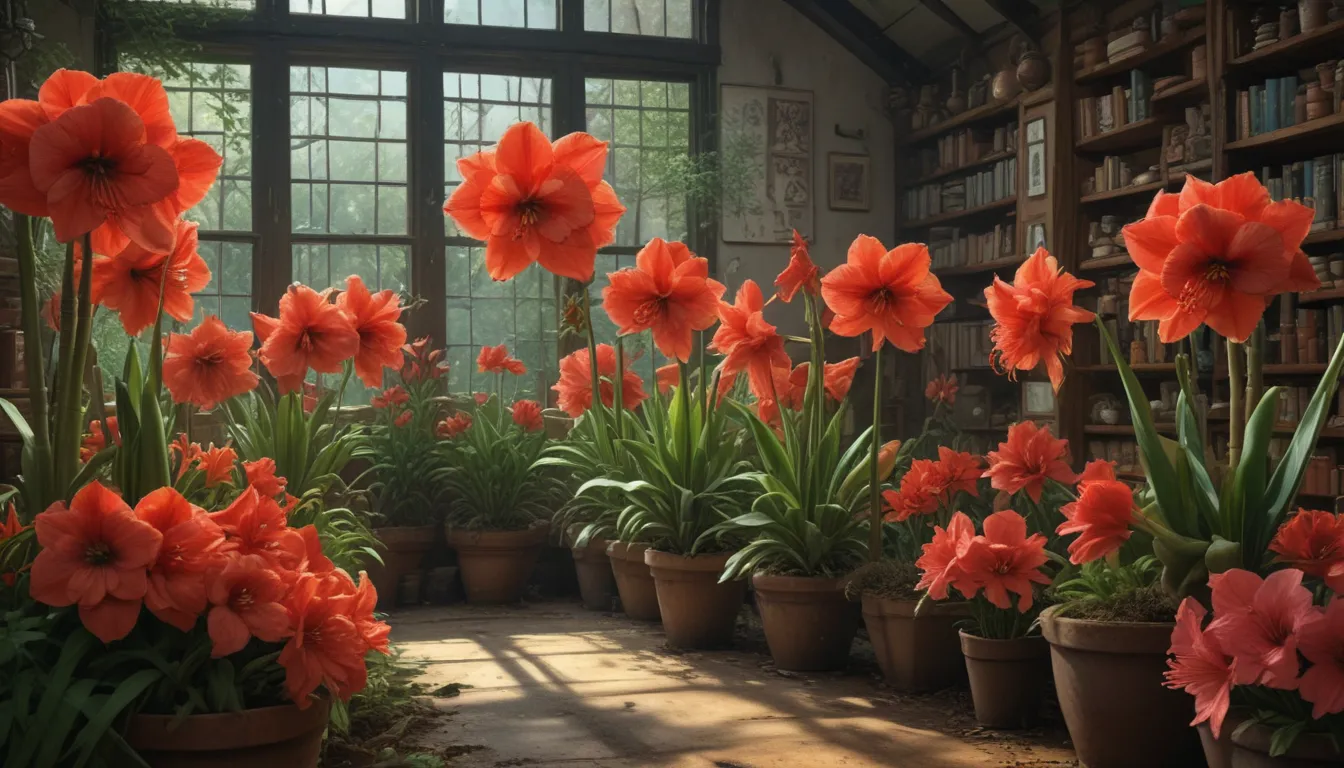A Comprehensive Guide to Preventing Amaryllis Bulb Rot

Who doesn’t love the special sparkle that amaryllis flowers bring to the holidays? The Greek origin of the word “amaryllis” means “to sparkle,” perfectly encapsulating the beauty of these flowers. But what do you do when your amaryllis plants start showing signs of rot instead of their usual splendor? Preventing bulb rot in amaryllis plants is essential to ensure they thrive and bloom beautifully throughout the holiday season and beyond.
Before the issue escalates, being able to identify signs of trouble in the bulbs and providing proper care for Hippeastrum plants is crucial. Whether you’re growing these gorgeous flowers indoors in containers or planting them outdoors in warmer climates, this guide will equip you with the knowledge to prevent rot and keep your amaryllis plants healthy.
Here’s what we’ll cover in this comprehensive guide:
Amaryllis Bulb Rot Prevention Tips
- Inspect Before Planting
- Water Carefully
- Assess Outdoor Conditions
1. Inspect Before Planting
Choosing high-quality bulbs free of disease from reputable sellers is the first step in preventing bulb rot. Avoid planting damaged bulbs, as they can lead to disappointment and potential pest or disease spread. If you acquire potted plants, check the soil for proper moisture levels and remove any excess packing material. Ensure the bulb emerging from the soil is healthy, firm, and shows signs of green growth. Discard any bulbs with discolored, moldy, or squishy areas, as they may have been improperly treated in transit.
Unpotted bulbs are easier to inspect for signs of trouble. Look for a uniform color, firm texture, and no soft spots. Avoid bulbs with physical damage, mold, or signs of pest infestation, as these are prime candidates for rot issues. Be wary of bulbs showing red blotches or signs of pests like mealybugs and narcissus bulb flies, as they can pave the way for infections that lead to rot.
2. Water Carefully
Overwatering is a common cause of amaryllis bulb rot. Water newly planted bulbs once thoroughly and wait until green growth appears before watering again. Check soil moisture levels regularly and only water when the top layer of the potting medium has dried out. Avoid letting the soil dry out completely, but be cautious not to overwater, as it can lead to rot. Discard any excess water collected in the saucer to prevent waterlogging.
In outdoor conditions, full sun exposure, good airflow, and proper drainage are essential for preventing rot. Amaryllis plants thrive in USDA Hardiness Zones 11-12 and are susceptible to cold temperatures, frost damage, and excessive moisture in unsuitable climates. Avoid overwatering, especially during dormancy, to prevent fungal infections and pest infestation.
Happy, Healthy Plants for the Holidays and Beyond
Proper care can help your amaryllis plants thrive as perennials for up to 75 years under ideal conditions. By providing the right environment and watering with care, you can enjoy beautiful blooms without the fear of rot. While some factors like southern blight and pest infestation may be beyond your control, maintaining a watering routine and ensuring optimal growing conditions can significantly reduce the risk of bulb rot.
Share your experiences with preventing or overcoming amaryllis bulb rot in the comments below. Feel free to ask questions or share your success stories with these stunning flowers. For more tips on growing amaryllis, check out these helpful guides:
- 17 Awesome Amaryllis Varieties to Grow Indoors or Out
- How to Propagate Amaryllis Bulbs
- How to Grow Amaryllis (Hippeastrum) from Seed
Preventing amaryllis bulb rot is essential for ensuring healthy plant growth and vibrant blooms. With proper care and attention, you can enjoy these beautiful flowers throughout the holiday season and beyond. Remember to inspect your bulbs before planting, water carefully, and assess outdoor conditions to create an optimal environment for your amaryllis plants to thrive.
Note: The information provided in this article aims to help readers prevent amaryllis bulb rot and ensure healthy plant growth based on expert advice. By following the recommended tips and guidelines, you can enjoy beautiful blooms without the fear of rot.
As always, feel free to reach out if you have any questions or need further assistance with growing your amaryllis plants. Happy gardening!





